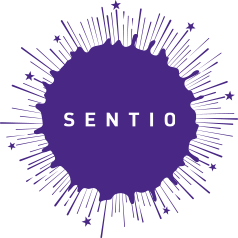I am often asked what and why clients require a content calendar. Very simply this helps with delivering relevant and interesting stories, imagery and videos which are important for a business to communicate a service/product and or story.
Creating a content calendar is a great way to organise your content and give you a strategy to ensure consistent, timely publishing. This is a step-by-step guide to help you create an effective content calendar:
- Define and understand your goals
Determine what you want to achieve with your content. For example this could include increasing brand awareness, driving traffic to your website, generating leads, or engaging your audience.
- Identify and target your audience
Understand who your target audience is and what type of content they find valuable and interesting, because they will engage with relevant content. This will help you tailor your content to meet their needs and preferences.
- Choose your content types
Decide on the types of content you will create, such as news stories, social media updates, videos, imagery and website updates. Linking these together helps keep the story in people’s minds and also helps with the brand awareness and corporate messaging.
- Select your channels
Identify the platforms where you will publish your content. The social media channels are the most effective to help drive traffic to the website and to relevant content news stories. Other platforms include your website, email newsletters, and news posits
- Plan your content themes
Outline the main themes or topics you want to cover over a specific period. You may hae seasonal content or want to celebrate special days such as world book day to help promote your products and services. This helps ensure your content is diverse, relevant and aligned with your overall strategy.
- Create a content calendar template
Use a tool like Monday, Excel, or a dedicated content calendar platform, these are great for helping with managing content and sharing with stakeholders. Your template should include columns for:
- Date: When the content will be published.
- Content Type: The format of the content.
- Title/Topic: The main idea or headline.
- Author: Who is responsible for creating the content.
- Sign off, it is important to make sure your client or the stakeholders see the content in advance and sign off all posts so these can be uploaded in advance.
- Status: The current stage of the content (e.g., idea, in progress, completed).
- Channels: Where the content will be published.
- Imagery such as photography, video and graphics
- Populate your calendar with content
Fill in your calendar with content ideas, this will ensuryou have a mix of different types and subject matter and products and services. Schedule content in advance to maintain consistency.
- Assign responsibilities
Clearly define who is responsible for each piece of content, you may have more than one stakeholder or client so it is important everyone sees the content and is happy before publishing. This helps ensure accountability and smooth workflow.
- Review and adjust
Regularly review your content calendar to track performance and make adjustments as needed. This helps you stay agile if required and flexible and responsive to changes.
- Use tools for automation
Consider using tools to help define the content interaction and the ROI if that is needed. Schedule to automate parts of your content calendar, such as scheduling posts and tracking deadlines.




